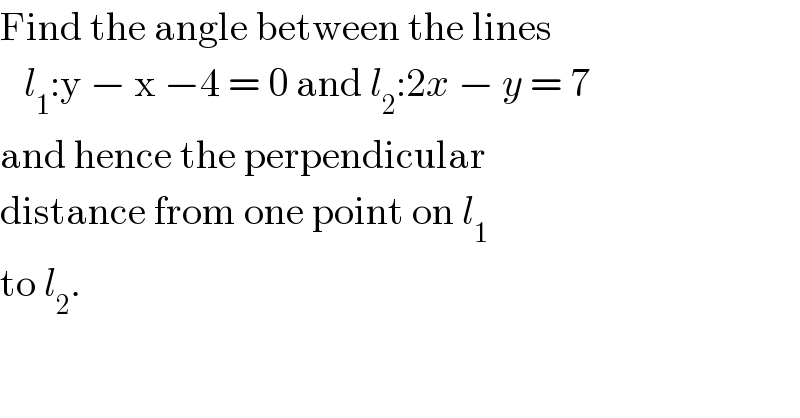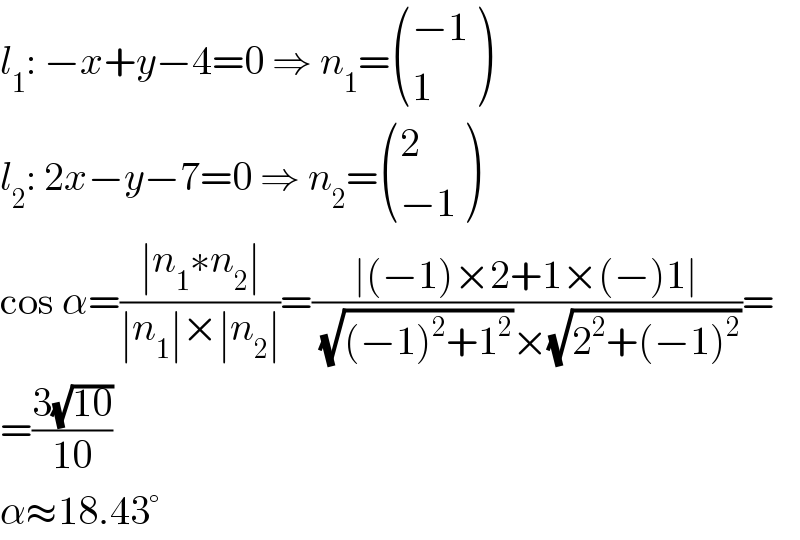
Question and Answers Forum
Question Number 36290 by Rio Mike last updated on 31/May/18

Commented by prof Abdo imad last updated on 01/Jun/18
![we have L_1 : x−y+4=0 so u(1,1) is a vector director of L_1 L_2 : 2x−y −7=0 so v( 1,2) is a vector director of L_2 ⇒ (L_1 ,L_2 ) ≡ (u ,v)[2π] cos(u,v) = ((u.v)/(∣∣u∣∣.∣∣v∣∣)) = ((1×1 +(1×2))/((√2) (√5))) =(3/((√2)(√5)))=(3/(√(10))) sin(u,v) =((det(u,v))/(∣∣u∣∣.∣∣v∣∣)) = ((∣_(1 2) ^(1 1) ∣)/(√(10))) = (1/(√(10))) ⇒ tan(u,v) = (1/3) ⇒ θ=(u,v) =arctan((1/3)).](Q36350.png)
Answered by tanmay.chaudhury50@gmail.com last updated on 31/May/18

Answered by MJS last updated on 31/May/18

